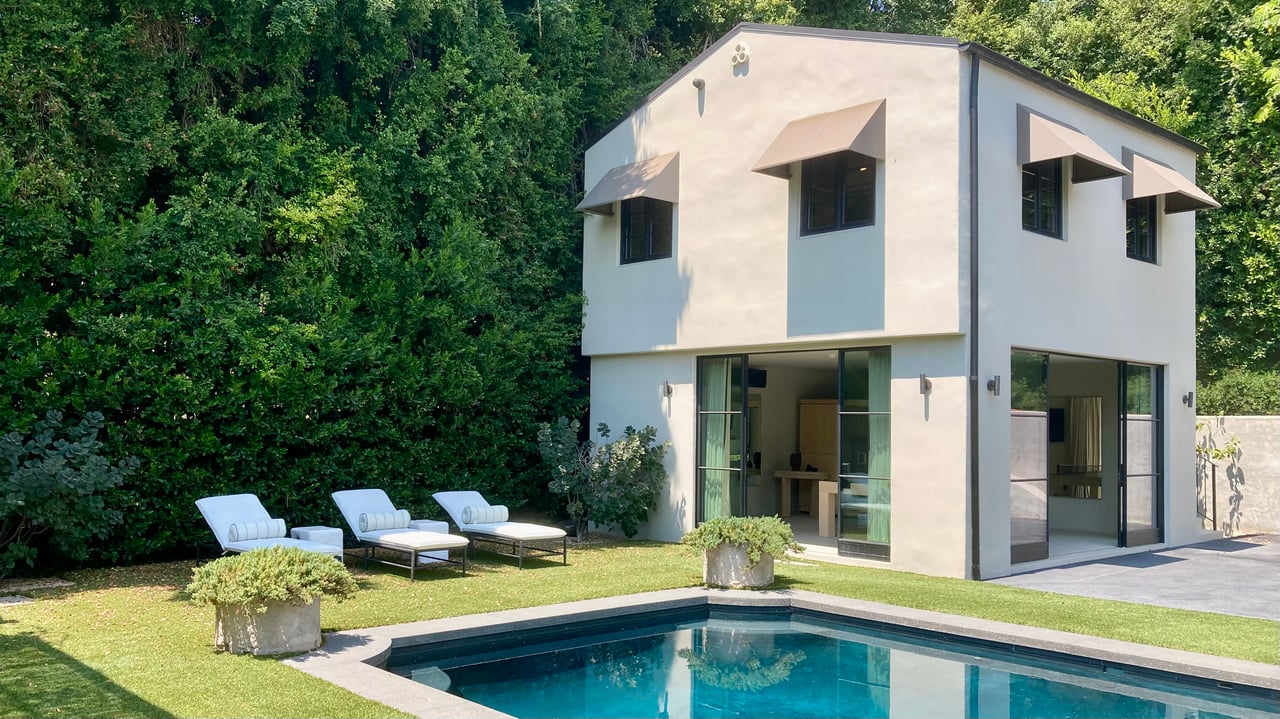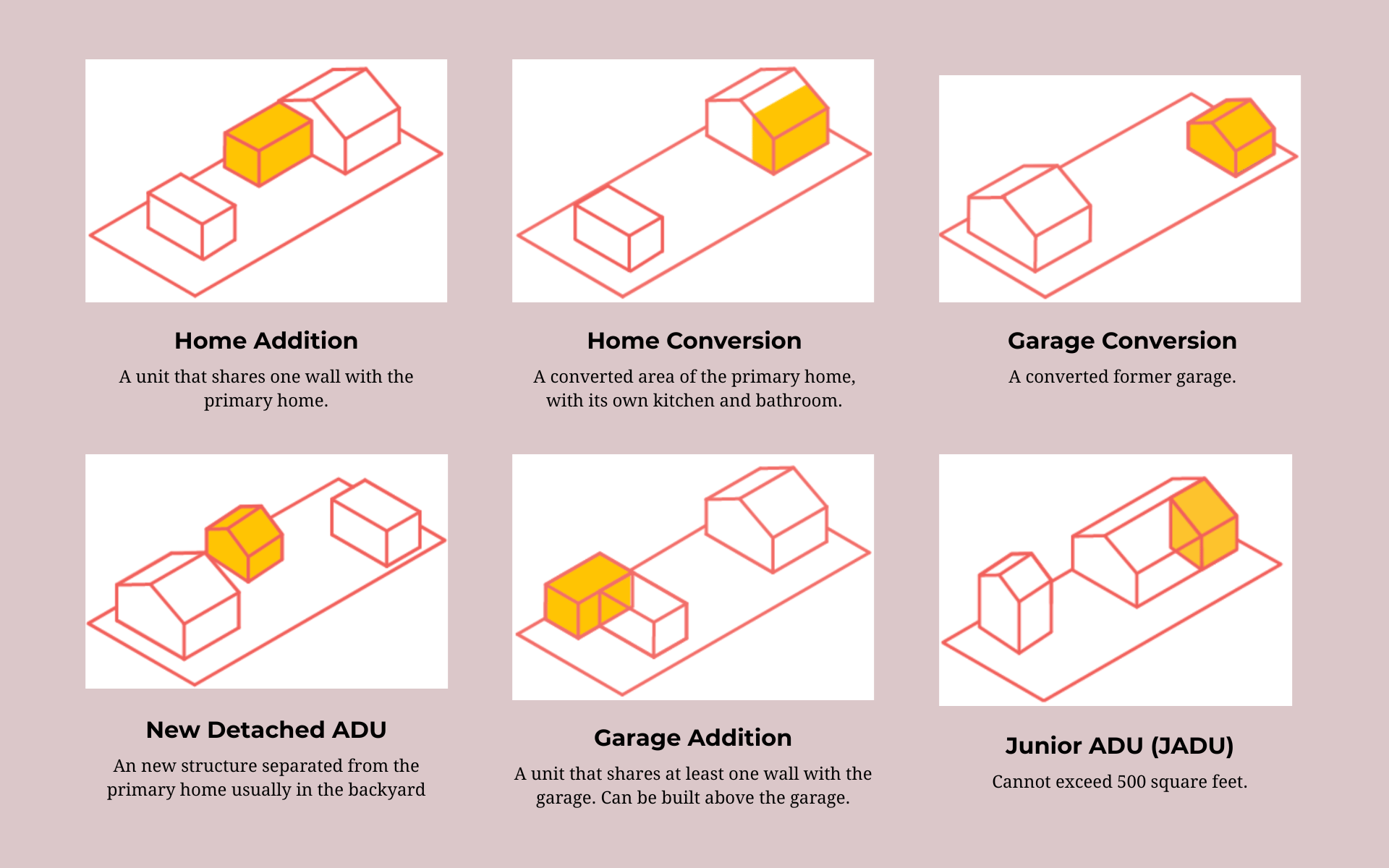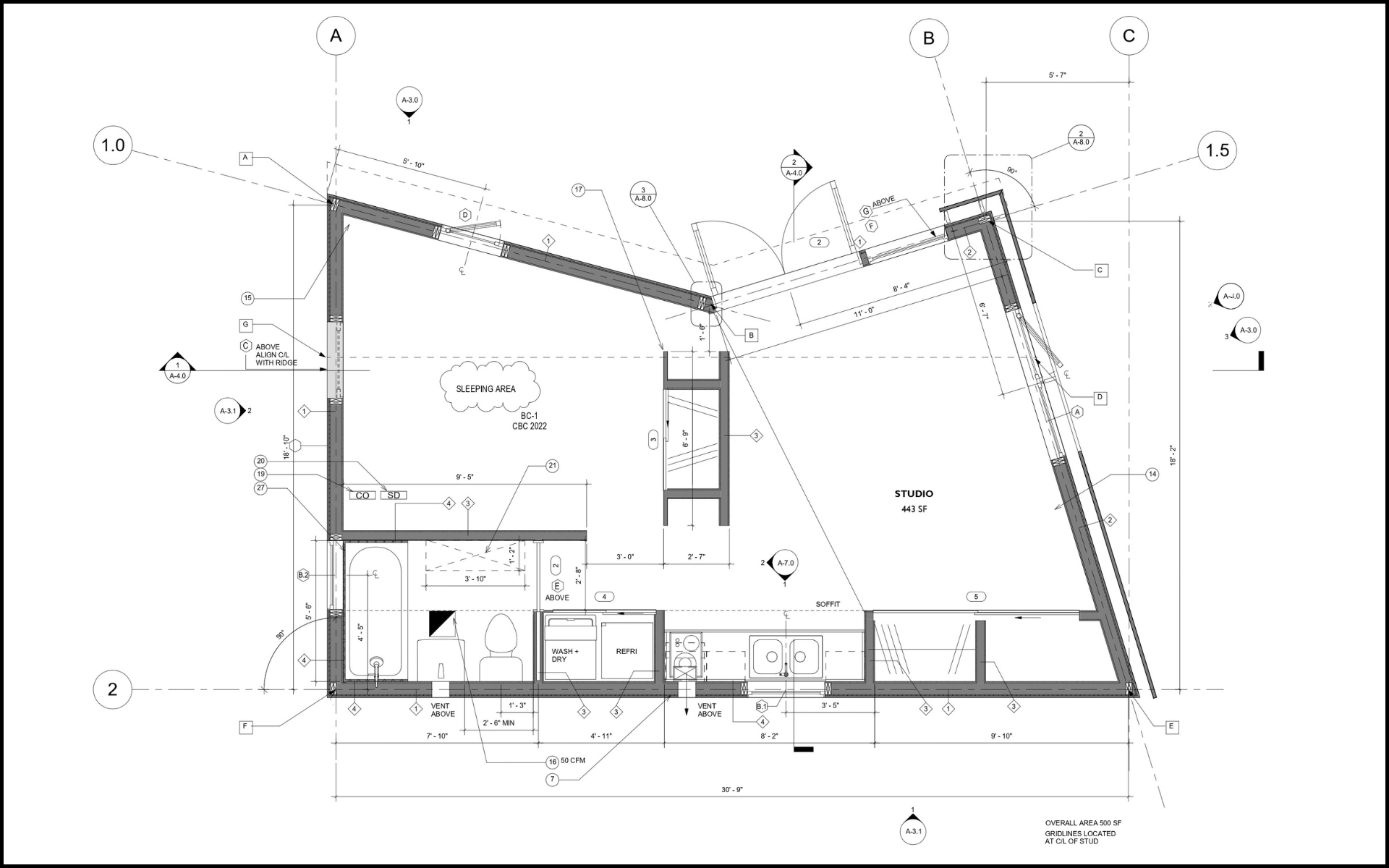An LA Homeowner’s ADU Decision Guide
If you own a home in Los Angeles, adding an accessory dwelling unit (ADU) can be a practical way to create rental income, provide space for family, or increase resale appeal. Whether you call it a granny flat or a backyard cottage, the right design can enhance your lifestyle and your property’s value. Before you start, it is important to understand how zoning rules, design standards, and financing options affect your project. Taking the time to learn how ADUs are approved, how they can be financed, and how they impact resale will help you avoid costly delays and ensure your investment produces long-term benefits.
What Is an ADU?
An ADU is a separate living space with its own sleeping, cooking, and bathroom facilities located on the same lot as the primary home. A junior ADU is smaller, no more than 500 square feet, and located inside the main house (California HCD ADU Handbook, 2025). They can be detached, attached, or conversions of spaces like garages. If your floor plan meets the City’s objective standards in the building codes and zoning regulations, the Department of Building and Safety must process your application without delay. The Standard Plan Program, which includes pre-approved designs like the free YOU-ADU starter plan, can shorten review times at the building department and simplify the process.
Los Angeles ADU Rules and Parking Requirements
Los Angeles follows California state law that makes it easier to fit an ADU on your property. Most units can be built with side and rear setbacks as small as four feet. If your plans meet the city’s objective standards, such as zoning, height, and layout, you can build at least 800 square feet regardless of local limits. Typical height maximums are 16 feet, but they can increase to 18 feet if your lot is near qualifying public transit or has a multistory multifamily building. An attached ADU can be up to 25 feet tall or match the height of the main house, whichever is lower.
Parking rules are also more flexible than many homeowners expect. You do not need to provide parking if your property is within a half-mile of public transit, located in a historic district, or if you are converting an existing garage. And there is no requirement to replace parking spaces removed for the conversion. State law also exempts ADUs under 750 square feet from local impact fees, while larger units pay fees on a proportional basis (California HCD ADU Handbook, 2025). And according to LAUSD Developer Fee Info, school impact fees apply only to ADUs larger than 500 square feet.
HPOZ ADUs in Los Angeles Historic Districts
If your property is in a Historic Preservation Overlay Zone, exterior work must pass design review. This ensures that the ADU’s style, roof form, and materials fit the surrounding neighborhood. While this can make the process longer, it helps protect neighborhood character and improve energy efficiency if modern building standards are followed. For example, a small detached ADU designed to match an existing Craftsman home’s trim, windows, and proportions can meet preservation guidelines while offering the benefits of new construction. Engaging a designer familiar with HPOZ requirements early can help you avoid costly revisions and keep your application moving forward.
Cost, Financing, and Property Taxes
Building an ADU in Los Angeles can vary widely in cost, depending on the square footage, type of unit, and the amount of site work required. Conversions, such as turning an existing garage into an ADU, are usually less expensive than constructing a new detached unit. Property taxes will only increase based on the value of the new construction, so your existing Prop 13 base year value remains unchanged (LA County Assessor).
When it comes to funding, you have several options. A home equity loan provides a fixed lump sum, while a cash-out refinance or home equity line of credit allows flexible access to funds during the construction process. Some home buyers will pay a premium for properties with ADU potential, making it a strong resale feature. Additionally, the CalHFA ADU Grant Program has offered up to $40,000 for eligible costs when funding is available, so it’s worth checking the program’s status before you finalize your budget.
The Step-by-Step Process for Building an ADU
- Check your property in ZIMAS to confirm zoning, overlays, and any special restrictions.
- Choose your ADU type—detached, attached, or conversion.
- Select a design from the Standard Plan Program or hire a designer to create a custom plan.
- Apply for a building permit at the Department of Building and Safety, where the building department must review your completed application within statutory deadlines.
- Hire a licensed general contractor with ADU experience to oversee construction, manage inspections, and coordinate trades.
- Pass inspections and obtain final approvals.
- Lease the unit for 30 days or longer, or use it for family, guests, or other approved purposes.
Benefits of Building an ADU in Los Angeles
An ADU offers flexibility for multigenerational living, a home office, or generating rental income. They are especially appealing to home buyers who value versatile housing options. Building to modern standards can incorporate energy efficiency features such as solar panels, lowering operating costs over time. An ADU can also provide resilience if your household needs change, offering a space for aging parents, returning adult children, or a long-term tenant. For investors, the potential rental income combined with increased property value can make an ADU one of the most strategic additions to a Los Angeles home.
Common ADU Misconceptions About Lot Size and Approvals
Many believe an ADU requires a large lot, but reduced setback rules mean even smaller backyards can qualify (California HCD ADU Handbook, 2025). Others assume approval is discretionary, but qualifying projects that meet state and local standards are processed ministerially. For example, a 400-square-foot garage conversion on a modest lot in Highland Park can move quickly through approvals when it meets setback, height, and design rules. Understanding the standards before you submit plans can save months of delay and help ensure your application is approved on the first review.
Design Tips for Efficient, Code-Compliant ADUs
Work with your general contractor to develop a layout that maximizes privacy and light for both units. Consider storage, soundproofing, and shade elements suited to Southern California’s climate. Aligning your design with building codes early helps prevent costly redesigns. A thoughtful floor plan can make a smaller ADU feel more spacious while still meeting requirements for light, ventilation, and safety. Using built-in storage, multi-functional furniture, and well-placed windows can also improve livability and market appeal.
Working with Contractors
Always hire a licensed general contractor with ADU experience (California Contractors State License Board). Verify references, confirm insurance, and agree on budget and timeline before signing. A skilled general contractor manages inspections, coordinates trades, and keeps your home improvement project on track. They can also identify opportunities for energy efficiency during construction, such as upgraded insulation or HVAC systems. Clear communication with your general contractor ensures that you stay informed about milestones, changes, and any issues that arise.
Long-Term ADU Maintenance and Management Strategies
Plan ahead for maintenance costs like exterior paint, roofing, and HVAC service. These expenses can be reduced with quality materials and energy-efficient systems during construction. Some owners hire property managers to handle tenant placement, rent collection, and upkeep, while others choose to self-manage if the ADU is used for family or friends. Keeping a reserve fund for repairs helps avoid financial strain and keeps the unit in good condition, which is essential for maintaining property value and satisfying tenant expectations.
How SB 9 and ADU Laws Enhance Southern California Housing Options
In Southern California, SB 9 complements ADU laws by allowing eligible lot splits and duplexes, expanding gentle density in residential areas (California HCD ADU Handbook, 2025 — see also SB 9 text). While SB 9 focuses on creating two homes per lot, ADU laws support adding one or two units on the same property. In some cases, combining SB 9 with ADU allowances can create multiple rental opportunities. This combination appeals to home buyers seeking properties with strong income potential, especially in high-demand neighborhoods close to jobs, transit, and amenities.
Benefits of Building an ADU with the Right Contractor
Building an ADU is a major home improvement project that can increase your property’s value, provide more housing options, and add flexibility to your living arrangements. With the right general contractor, thoughtful design, and compliance with building codes, your ADU can be a lasting asset. It can generate income, adapt to changing family needs, and make your home more attractive to future buyers. By planning carefully and following City guidelines, you can maximize both your return and the day-to-day benefits of your new space.
Ready to explore adding an ADU to your Los Angeles home?
Let’s review your property, confirm your zoning, and map out a plan that fits your goals and budget. The sooner you start, the sooner you can enjoy the income, flexibility, and added value an ADU can bring.


